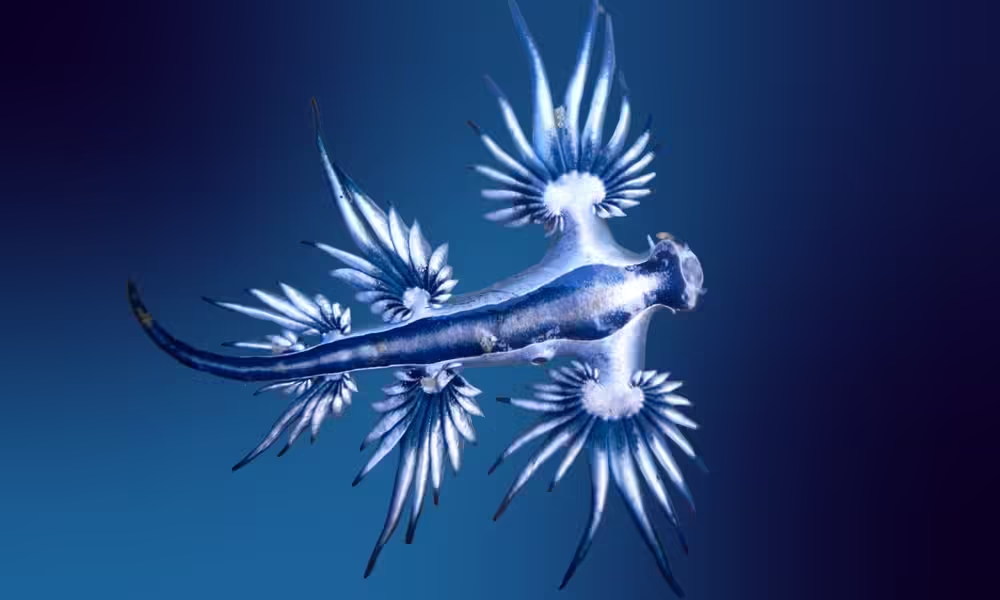Blue Dragons Cause Beach Closures Along Spain’s Coast
What Are Blue Dragons?
The blue dragon (Glaucus atlanticus) is a striking little sea slug that looks more like something from a fantasy novel than real life. Barely 3 to 4 cm long, these creatures float on the surface of the water on their backs, using a bubble of gas in their stomachs to stay afloat. From above they look vivid blue, blending into the sea, while from below they are silver-grey, hiding from predators beneath.
They may look delicate, even cute, as they drift upside down in the waves, but their appearance hides a dangerous secret. Blue dragons feed on venomous animals such as the Portuguese man o’ war and store the stinging cells in their own tissues. This means their sting can be even more painful than the prey they eat.
Why They Are Dangerous
Contact with a blue dragon can cause burning pain, rashes, nausea, and vomiting. In sensitive people, children, allergy sufferers, or those with health conditions, the reaction can be even more serious. The advice is simple: if you spot one, don’t touch it, not even with gloves.
Beaches Closed in Summer 2025
The sudden arrival of blue dragons has led to several temporary beach closures in Spain this summer:
- Guardamar del Segura (Costa Blanca) – On August 20, two specimens were spotted at Vivers Beach. Authorities immediately raised red flags and closed around 11 km of coast to swimmers. The next day, no new sightings were reported, and beaches reopened under yellow flags, with warnings still in place.
- Santa Bárbara Beach, La Línea de la Concepción (Cádiz) – Around mid-August, five or six blue dragons were found washed ashore. The beach was shut and later reopened under caution once the area was checked.
These closures were short-lived, but they show just how seriously local councils take the threat.
Why Now?
Experts believe shifting sea currents and warmer waters are bringing these usually open-ocean creatures closer to shore. Strong winds can also blow them into shallow waters and onto beaches, where they are more likely to be noticed.
What To Do If You See One
If you come across a blue dragon:
- Don’t touch it.
- Alert lifeguards or beach authorities.
- If stung, rinse the area with sea water (not fresh), remove any remains with a card or tweezers, and seek medical help if symptoms persist.
Beauty and Danger in Equal Measure
There’s no denying that blue dragons are fascinating to look at, tiny, brilliantly coloured, and floating upside down as if showing off. They seem almost playful as they drift along, but the truth is, they can cause havoc when they arrive on busy beaches. This summer has proven that even the smallest creatures can have a big impact, and beachgoers are learning to admire them from a safe distance.
Main image: Shutterstock/moskha.com
Maximise Your Audience
Reach English-speaking readers in Spain with sponsored articles on The International Reporter. Each article reaches thousands of readers and, in some cases, is featured on our Resources page for ongoing visibility. We also collaborate with some of the largest expat Facebook groups in Spain, helping your content reach a highly engaged audience.
Contact us at info@theinternationalreporter.com to get your story or business noticed.
Share this content:




Post Comment